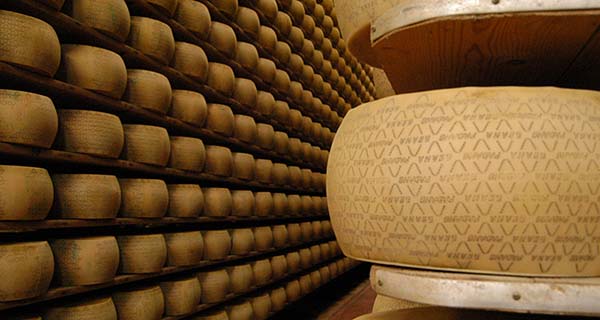
Italian cheeses are having a ‘hard’ time in some countries. In the US, for example, cheese is the most purchased “made in Italy” branded food and the third most imported food from Italy, after wine and oil. Italian producers are also the main cheese suppliers for the States, with a share of around 30% of total US dairy imports. However entry hurdles, customs formalities, and the rising costs on top of supplementary tariff barriers, such as extra-European sanitary requirements, are putting a strain on the Italian dairy industry. Meanwhile, the cheese production in the US continues to grow and cheese Made in the Usa, which are often clones of the Italian ones, is gaining a substantial foothold, so much so that exports have increased by 688% between 2000 and 2014.
UK, HARD TIMES FOR THE TRAFFIC LIGHT LABELLING SYSTEM – Cheeses, and not only Italian ones, are encountering some difficulties also in the UK. When talking about the nutritional value of food, the traffic light labelling system is prevalent, which indicates reduced nutritional value of food in terms of fats, sugar, and salt, without considering all the other nutrients. It is calculated on the basis of 100 grams of food, and not on the recommended amount of consumption. Britain is the fourth largest export market of Italian dairy products. According to Assolatte’s analysis of Istat sources, Britain has bought 31,802 tonnes of cheese from Italy in 2015 (+ 7.8% over 2014). However, the increase in volumes was achieved at the expense of Italian companies, which had to lower the prices of quality dairy products so as to make Uk consumers buy Made in Italy cheeses labelled with a red light. What is more, the new “Eatwell Guides”, the official nutritional guidelines of Britain that has just been presented by Public Health England, substantially contributed to the reduction of the recommended daily calories intake coming from milk and cheeses (from previously 15% to 8%) and unites “real food” (like milk) with artificially enriched “processed food”.
ITALIAN INDUSTRY TO PROMOTE DAILY CONSUMPTION – However, Assolatte, the Italian Association of dairy Industry, also highlights that in many countries (such as France, Canada, the Usa, the Netherlands, and Australia), the “three-a-day-programme”, promoting the daily consumption of three servings of dairy products in a proper and balanced diet so as to obtain the optimal intake of many important nutrients, has been implemented following the collaboration of governments and the scientific sector.
GRANAROLO TO FOCUS ON ASIA AND NEW ZEALAND – Nonetheless, Italian companies continue to focus on international markets in Europe and beyond. This is Granarolo’s case, which opened a branch in Shanghai last year to meet the growing demand of the Chinese market for imported food products. Now the new frontier is New Zealand. Last October, the company purchased 25% of European Food, a New Zealand distributor of Made in Italy products based in Auckland, with the potentiality of increasing by 51% within 12- 18 months. The market for Italian cheeses in New Zealand is worth more than 5 million euro and 33 million in Oceania, of which more than 50% consists of Parmigiano Reggiano and Grana Padano.
